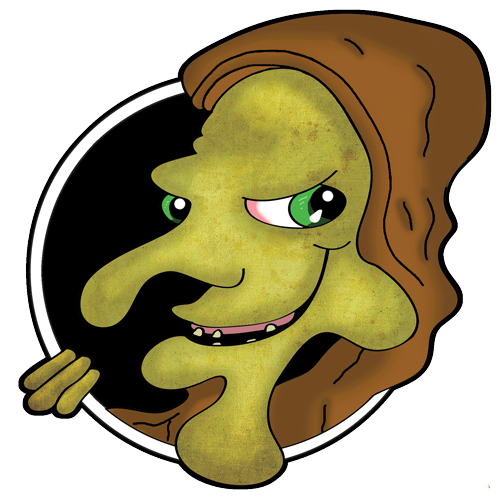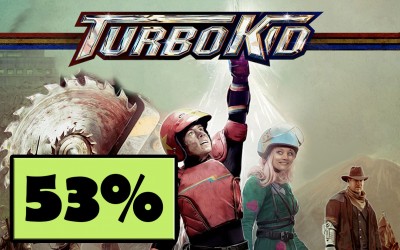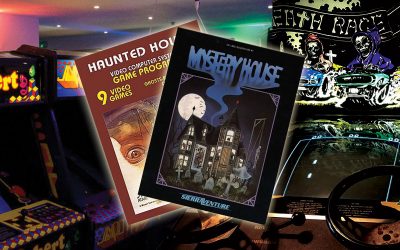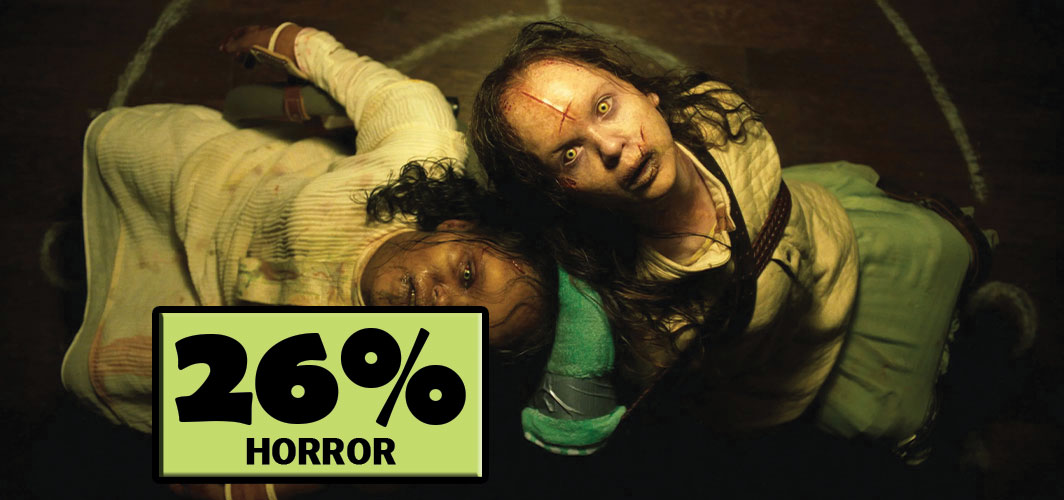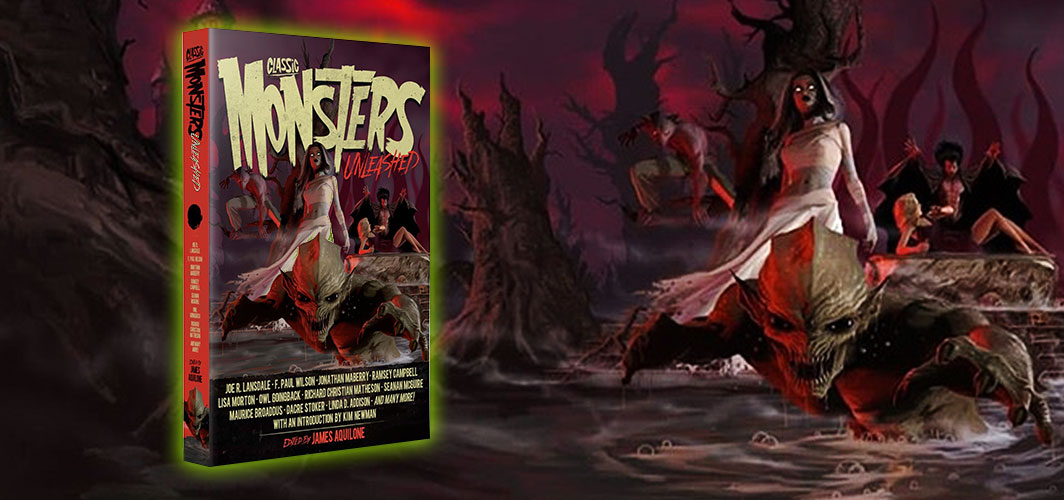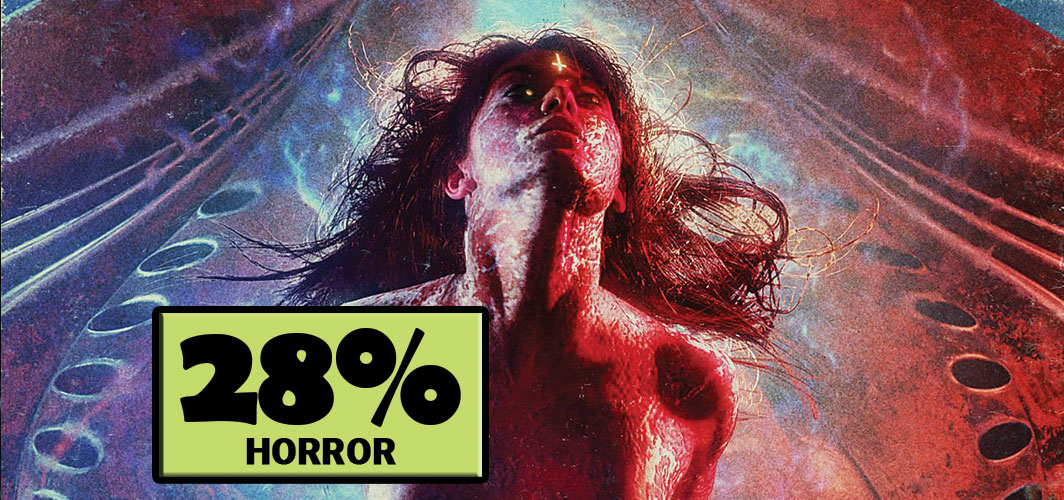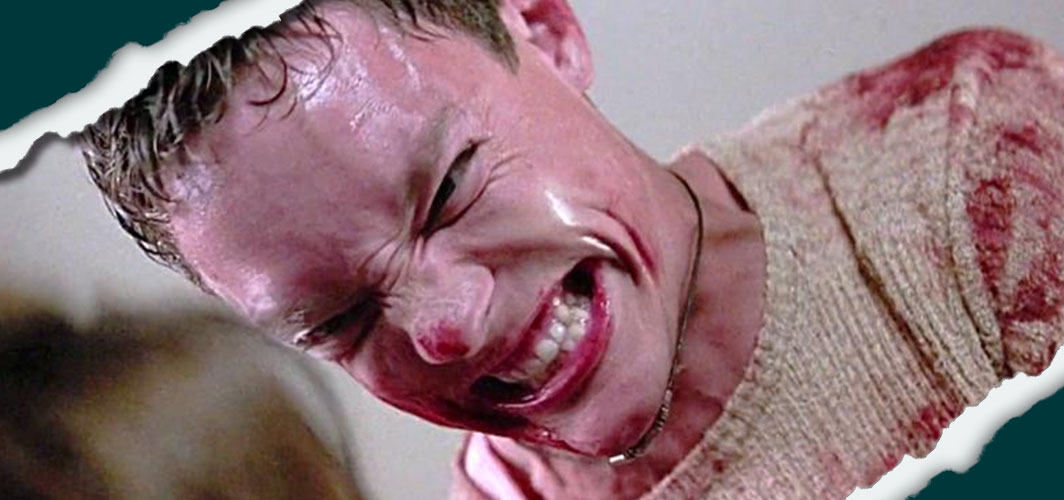The Evolution of Horror Videos Games 1984 -1986
Continuing our journey into the Horror Video Game History, we look at period of growing change within the industry. Film companies had started to become interested in this new commodity, whilst developers were pushing the boundaries of game design. The darker side of game development was rearing its ugly head, and all sort of horror nasties were about to be released into the public domain. In the short few years between 1984 to 1986, huge franchise were born, certification was enforced and horror was firmly finding it’s claws stuck into the fabric of video games. The Evolution of Horror Videos Games 1984 -1986
The Evil Dead (1984) – Commodore 64 and ZX Spectrum
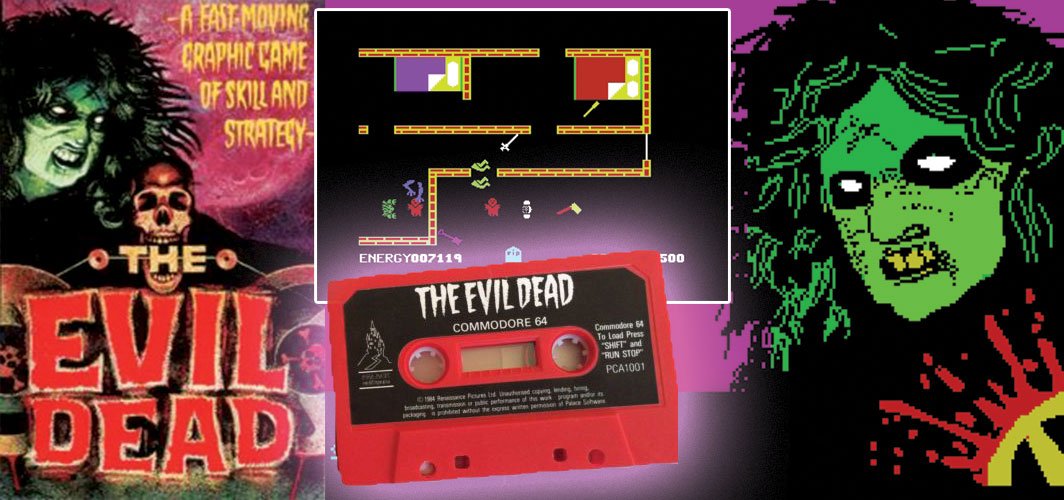
With the rise in popularity of home computers, film companies were quick to jump on the bandwagon of video game adaptions. The Evil Dead video game was released in 1984, three years after the film’s release, an afterthought release that was met with a lot of good reviews by gaming magazine. There were some concerns in the UK, that a game based on a ‘Video Nasty’, could potentially be just as detrimental to society, however all these concerns were quashed, when the game was actually released. The scariest things about the game was its crude graphics. However the BBFC were still keen to get in certification for video games (more on this later).
In the Evil Dead, you take on the role of the films’ lead protagonist, Ash, whose main goal is to score enough points to earn The Book Of The Dead, which you can then throw in the fire and win the game. The game is played in a top down view, with Ash, Linda, Cheryl, Shelly and Scotty all inside the cabin. Ash must shut windows and doors to keep out The Evil Dead, appearing as a green wind looking thing. If it gets inside it possess one of Ash’s friends, who then become possessed. Defeating the possessed creatures would see them scatter into disembodied arms and legs, which you would also need to defeat. They monsters can be fought off with random weapons that spawn throughout. Despite it’s graphics, it did nail the games overall story, even included the swing on the porch, a nice little detail for fans of the film.
Alien (1984) – Commodore 64 and ZX Spectrum
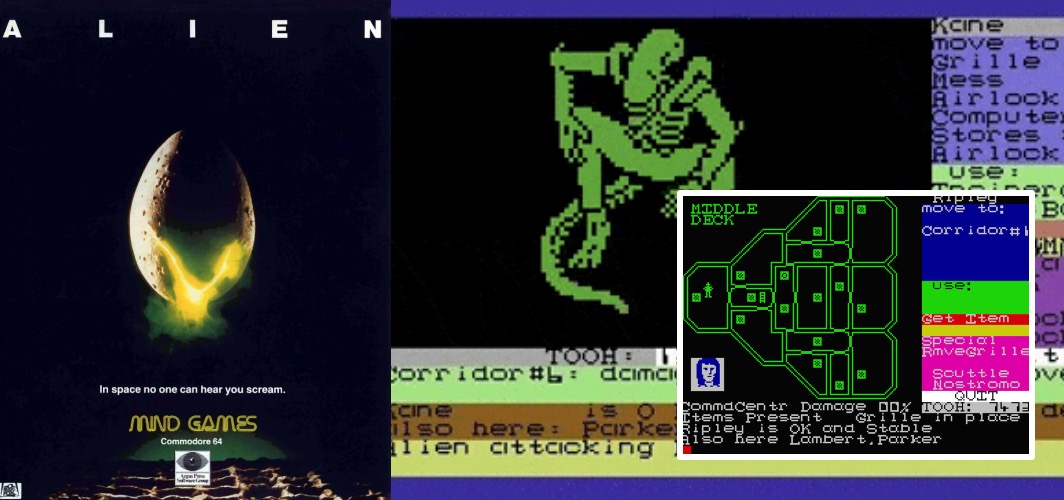
Another movie tie in was the 1984 game adaption of Alien. It was a top-down hybrid strategy/adventure video game, developed by Concept Software and published by Argus Press Software for the Commodore 64 and ZX Spectrum. You play as the entire crew of the Nostromo, and via a simple up and down menu system, you must destroy the alien and discover who which crew member is secretly an android. The game starts with two random members of your crew being picked, one is impregnated by the alien and the other is the android. Via the top down map and menu, you can move the crew around and interact with the rooms and items, such as nets, incinerators, pistols, and oxygen tanks, which are going to come in handy when the Alien bursts from the chosen crew mate’s chest and starts to pick you off one by one. The main goal is to kill the alien and get as high as score as possible. How you do this is up to you. You can take the creature head on, try to flush it out of the airlock, or choose to escape on the small drop-ship the Narcissus, setting the Nostromo to self-destruct. Just don’t leave Jonsey the cat behind! Each crew member also has a mental state, which would alter as your crew mates disappeared, adding more challenge to the game. Anyone that becomes hysterical or broken would stop obeying your orders, as they become frozen in fear. Picking up weapons would positively boost their current mood, but a frozen crew mates was pretty much doomed. Add to the fact that any one single character could turn robo-killer on you, and the constant threat from the alien, and you have a dark and intense game that will constantly keep you on your toes.
The Screamer (1985) – PC-8801
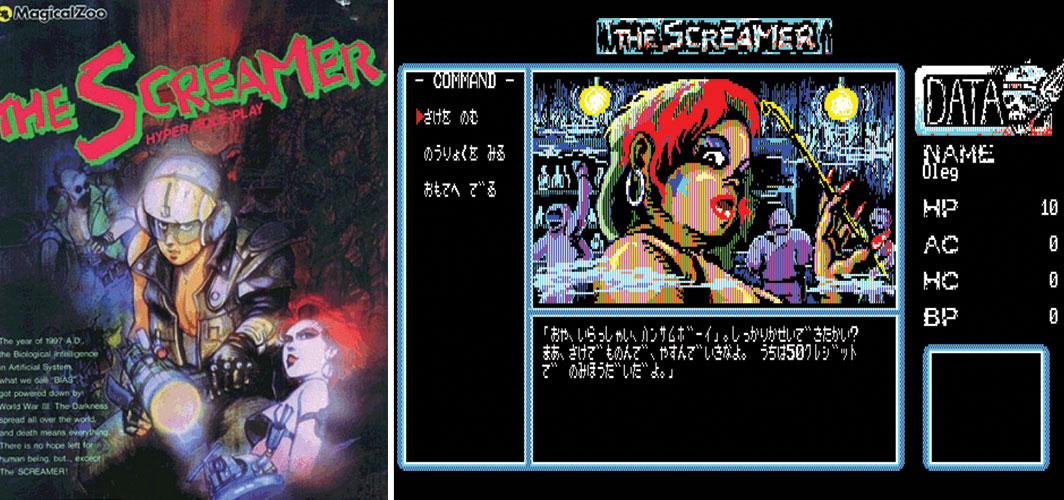
One of the most intense games of its time was The Screamer, a text-based game set in a steam punk, post-apocalyptic world. This japanese title featured gameplay that switched between first-person dungeon crawl exploration and side-scrolling shooter combat, where the player could jump, duck and shoot at enemies in real-time. Set after World War III dangerous creatures have gone rampant inside the “Biological Intelligence in Artificial System” which is a huge maze-like dungeon, and your character must investigate these strange events. The Screamer introduced permanent deaths for characters, which meant that combat was extraordinarily intense, as you battled to keep you characters alive from hordes of zombies and mutants. But it was the games story that really turned up the anti, being dark, thrilling and and incredibly intense.
Castlevania (1985) – NES
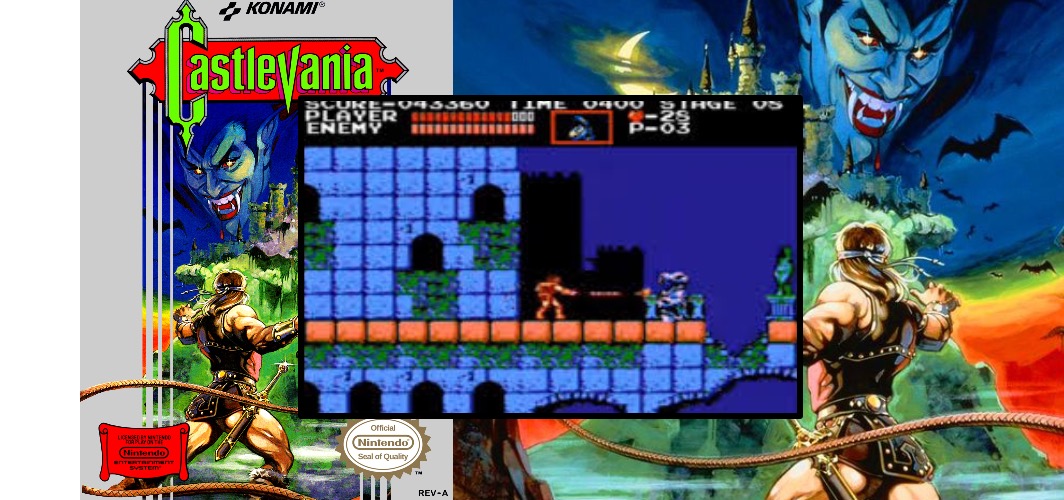
The NES brought a new level of gaming to households, bringing better graphics and sound along with more complex and challenging games. Castlevania was released in 1986 by Konami, and is a side scrolling platform game in which the player takes the role of Simon Belmont, a descendant of a family of vampire hunters. Simon’s task is to infiltrate Castlevania and defeat Count Dracula. Using his whip, called “Vampire Killer”, Simon can kill monsters and pick up power ups and new weapons. The darker nature of the game, along side a strong protagonist, gave Castlevania a huge fan base, and its popularity has spawned over 30 different games. There’s something about whipping werewolves, mummies and vampires that’s just too damn fun.
Ghosts ‘n Goblins (1985) – Arcade
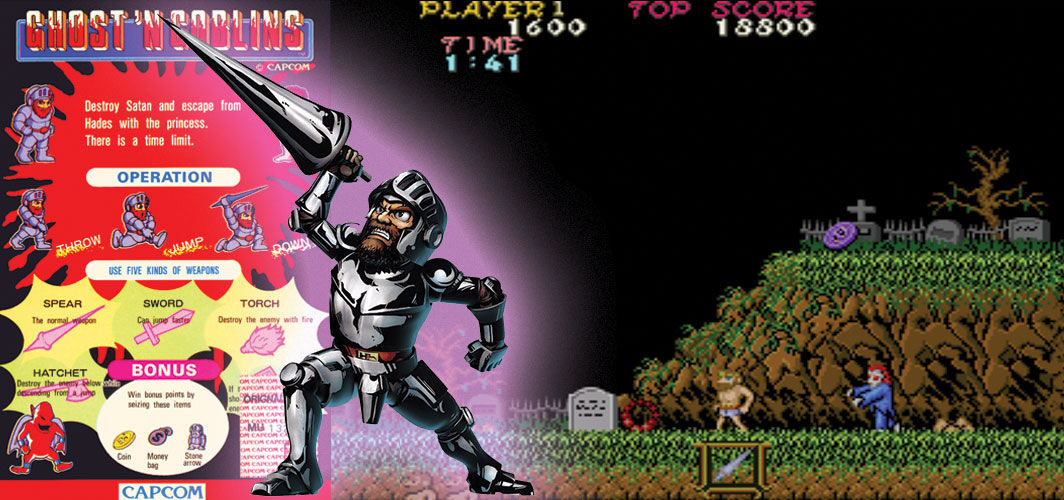
By 1985, the popularity of horror video games had grown considerably, and the release of Ghost n Goblins proved that these games could be fast, fun and challenging. Ghosts n Goblins is a side scrolling ‘run and gun’ platformer, that introduced some interesting mechanics. You play as a knight called Arthur, who’s on a quest to save princess Prin-Prin from the demon king Astaroth. Out to get Arthur is a whole host of ‘Ghosts and Goblins’. The game has a smorgasbord of creatures for you to fight. Zombies relentlessly crawl up from the dirt and flying creatures swoop down to finish you off, whilst killer plants launch fire balls at you. As Arthur can only shoot right to left, the best tactic is to avoid these creatures rather than killing them. Arthur can only take two hits before he is dead, the first will knock his armour clean off, leaving the poor knight to fight of beasts in his heart covered underpants. A second hit will knock him out of his skin, turning Arthur into a pile of bones and sending you back further into the game. The game was relentlessly hard, and the more coins you had, the further you would get. You’d never get too far with just one life. Arthur could get Weapons and Armour replacements by smashing clay pots, but not all weapons were better. Accidentally picking up the awkwardly handled axe was a sure way to getting yourself killed. Dying would only fuel your gaming urge. The game’s replay value was second to none, where you’d constantly want to get further into the game, convincing yourself you’d be able to overcome the challenge that ended you game. Yep that green monster plant really nailed you on that last level, maybe next time you’ll be able to avoid his fireball?
Zombi (1986) –Amstrad CPC
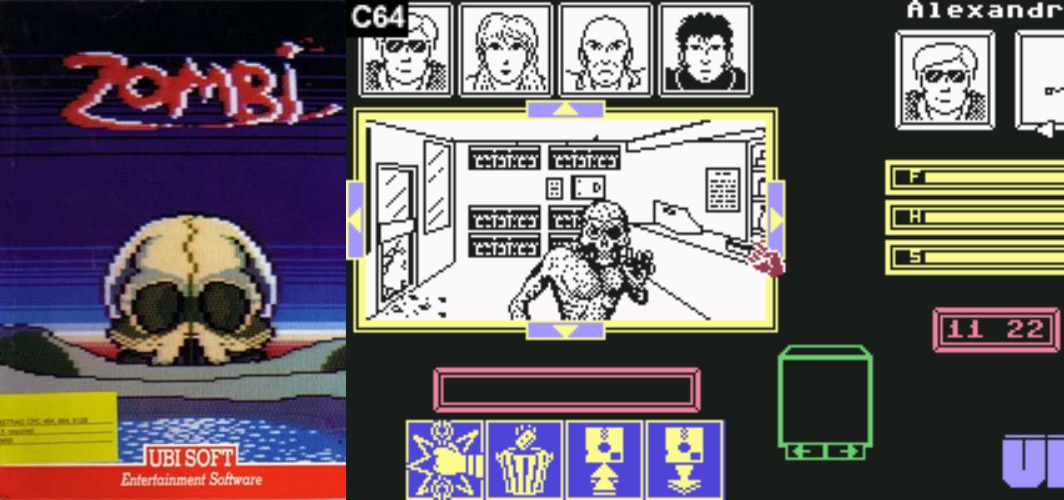
Being the very first game developed by Ubi Soft, Zombie is a first-person arcade adventure, which draws inspiration from the George A. Romero film Dawn of the Dead. The Acton takes place inside a zombie-filled shopping mall, where the player takes control of four protagonists. You direct the characters, who have landed on the roof of the building, to find a number of objects in order to escape a horrible death at the hands of the zombie horde. The zombies could be killed with several body shots, or a single well aimed shot to the head(double tap). If a character died, they too would turn into a zombie and wander around as aun undead ghoul. The game adapted several elements of popular games, the growing popularity of point and click, first person shooting and adventure (exploration, Objects and puzzle solving) to great a brand-new genre known as the action-adventure game. This innovative way of game making lead Ubi Soft to become one of the leading game developers of our time.
Dracula (1986) – Commodore 64, Amstrad CPC and ZX Spectrum
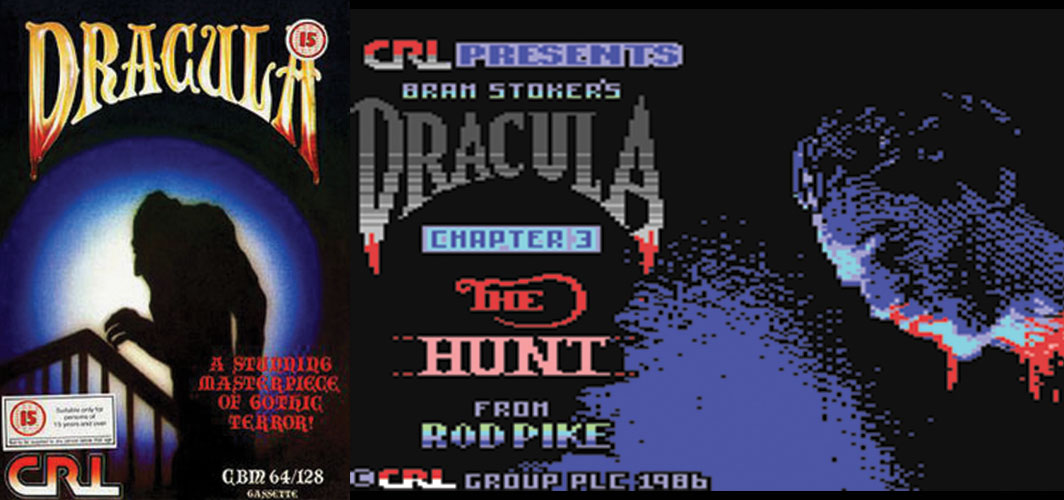
Dracula is a text adventure game by CRL released in 1986 for the Commodore 64, Amstrad CPC and ZX Spectrum. Based on Bram Stoker’s classic book, it tells the tale of an English lawyer who travels to Carpathia to meet Count Dracula regarding a routine property transaction, but soon learns that his client has sinister ulterior intentions. Whilst the game was a straight forward text adventure game, it had the honour of being one of the very first video games to be rated by the BBFC. Fresh from the video nasty censorship during early 80s Britain, the eyes of the British Board of Film Classification were firmly on this new form of media. After going under the scrutiny of the BBFC, Dracula received a very unfair 15 certificate. Consider this was a TEXT based game, with a handful of crude pixilated images, this classification was wholly inappropriate for the title. The images were the route cause being classified as inappropriate for children who might fight the images upsetting “prior to bedtime”. The funny thing is that CRL intended to get a certificate. As a way of getting publicity, CRL used in-house artists to create the goriest pictures they could. Every time you died in the game, you’d be met with a crude but grisly image or your dead and bloody corpse. The BBFC was more than happy to slap the title with a certificate.
Phantomas 2 (1986) Amstrad CPC, Spectrum and MSX

Phantomas 2, also re-released as Vampire in 1987 for the C64, was a platform game stretched across ninety-five different screens. You play as Phantomas, an intergalactic thief who must infiltrate Count Dracula’s Castle and Kill him. To accomplish this, the player must navigate through the castle, picking up keys and other objects, whilst avoiding the many traps and enemies. The game had a linear path in which you had to take, but the sheer size of the game, and the fact you only had a short life bar, made it extremely difficult. You had constantly go back and forth through traps and monster filled rooms, flicking switches and picking up items. Phantomas would have to dodge baddies such as, skulls, rolling barrels and laser beams (explained by the whole intergalactic thing I guess?). Phantomas 2 was a challenging game which really stretched the limit of your memory, as your travelled across the huge map. However, after making you way to the very top of the castle, and jumping into Dracula’s flashing coffin, something odd happens. You see, apart from a picture hanging on a wall, you never meet Dracula, instead your thrown inside of Dracula, where you must fend of white blood cells (I think) until Dracula’s heart appears. At which point you can shoot it and finally end Dracula’s reign.
Other Articles
Extreme Body Horror: The Substance (2024) and Other Unforgettable Gore-Fests
A gore filled deep dive into a history of Body Horror
Incel Killers: A Dark Reflection on Misogyny and Violence
Looking at the Incel community and the terrible crimes commited
13 Movie Teasers That Used Original Footage
A tasty selection of footage never meant for the final cut, shot just for the trailers
Movie Reviews
Hellbound : Hellraiser 2
Don’t Hesitate!
The Green Inferno
What’s Eating You?
Turbo Kid
Smashing Gnome Sticks!
Other Posts Like This
The Evolution of Horror Videos Games 1972 -1982
Part 1 of our Dark Games History
“Hello Horror Fans – A time of great change within the game industry. It’s great to see some of my favorites on this list. I played Vampire for hours, though I never did get very far! Keep your eyes out for more Horror Video Game History.
Keep Rotten”
“Morti” The Mortician
